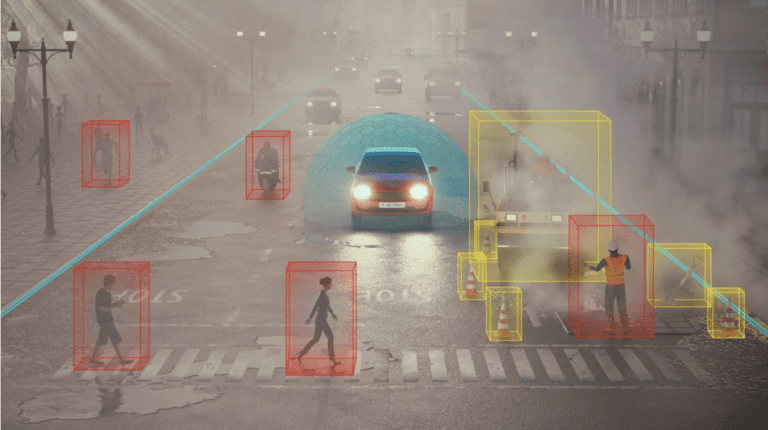TI's Evolved Technology for
Advanced Driver-Assistance Systems
Very few technologies invoke both trepidation and anticipation the way autonomous driving does. Taking to the open road has long been a symbol and source of freedom for drivers, and some see self-driving cars as an expansion of that. Advanced driver-assistance system (ADAS) technology is helping to make driving safer across the board.
Globally, tens of millions of people are injured or killed each year on roadways. Statistics like these are the impetus that drives the push for stricter safety regulations and better driving quality. Many see fully autonomous vehicles as the best solution to truly bring this situation under control.
Striking the best balance between safety and driver concerns continues to be an issue that may not be resolved to everyone’s satisfaction.
Yet, reducing the number of accidents and fatalities is a priority that cannot wait. And companies, such as Texas Instruments, are developing technology to improve advanced driver assistance systems to help improve safety today and for future vehicles.
Advanced driver-assistance system (ADAS) technology strives to achieve what everyone wants. Collision-free roadways. According to the National Highway Travel Safety Administration (NHTSA), ADAS implementation thus far can be partitioned into four time intervals based on the features introduced.
Advanced Driver-Assistance System Timeline
1950 – 2000: Introduction of features such as seat belts, cruise control and antilock braking system (ABS) technology.
2000 – 2010: Introduction of advanced safety capabilities like collision and lane warning and detection of blind spots.
2010 – 2016: Development of automatic braking systems, and increased alerts; including rearview video.
2016 – 2025: Advanced automated features for speed control, navigating traffic jams and avoiding lane violations.
The next stage of ADAS is projected to include fully autonomous vehicles. However, widespread self-driving usage will take some time. Reaching that goal depends upon the continuing development of ADASs that can be implemented to save lives today. And as the list above clearly indicates, these systems rely upon sensor technology.
The Key to ADAS: Sensing the Vehicle’s Environment
Driving today is filled with distractions. From monitoring all of the roadside visuals – billboards, traffic signs, pedestrians, etc. – keeping one eye on the GPS and perhaps on the kids in the backseat, it is a challenge to focus on the driving tasks that keep you safe.
These include maintaining a safe following distance, monitoring the movements of adjacent vehicles, and maintaining safe distances from cars’ lane boundaries. In addition, driver-assistance systems effectively extend our knowledge of our driving environment by utilizing multiple sensors.
How Sensor Fusion Brings the Environment Into Focus
For autonomous vehicles to provide the level of safety needed requires the use of various types of sensors, as shown in the figure below.

ADAS sensors
Effectively utilizing the data and information from these varied sources requires integration. The ability to connect these sources, process the data, and create a comprehensive environmental perspective on which ADAS implementations are made, which is known as sensor fusion. This is all made possible by high-bandwidth communication serializer and deserializer (SerDes) devices, such as TI’s FPD-Link™ components for automotives.
The automotive industry is one of the most highly regulated. However, regulations and standards for self-driving vehicles and the ADAS technology that enables them are far less than that of the overall industry. Yet, there is oversight. In the US, the NHTSA sets standards under the New Car Assessment Program (NCAP) to help companies develop systems to maximize the safety of vehicles that utilize ADAS technology.
How TI is Elevating ADAS Technology
TI is at the forefront of developing technology that improves the safety of automotive systems, including AVs and vehicles that employ smart ADAS technology. Corner radar and front radar sensors, like TI’s AWR2944 and AWR2243 sensors, allow for safer lane switching while empowering and enhancing existing features like automatic emergency braking (AEB), autonomous emergency steering (AES), automatic cruise control (ACC) and forward collision warning (FCW).

TI AWR1843AOP comparison
For example, TI’s AWR1843AOP mmWave radar sensor improves distance and fills in gaps in peripheral coverage that exist with ultrasonic sensors, as shown below. Its usage can better assist applications such as automated parking, as mmWave radar can outmaneuver ultrasonic by sensing objects further out than ultrasonic-based sensors.
In addition to enhanced capability, the TI’s AWR1843AOP mmWave radar sensor comes as an SoC-integrated package that includes the MCU, DSP, interface peripherals, transceiver, and antenna. This facilitates efficient design and development to market your board and electronics product faster.
If you’re looking for CAD models for common components or information on cutting edge technology like Texas Instrument’s products for advanced driver-assistance systems, Ultra Librarian helps by compiling all your sourcing and CAD information in one place. Working with Ultra Librarian sets up your team for success to ensure streamlined and error-free design, production, and sourcing. Register today for free.

